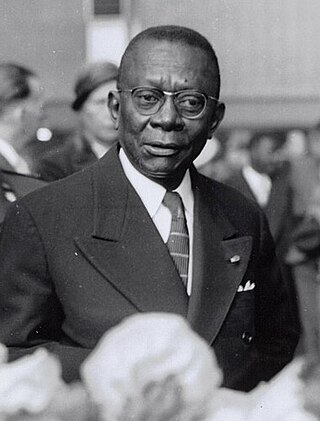
William Vacanarat Shadrach Tubman was a Liberian politician. He was the 19th president of Liberia and the longest-serving president in the country's history, serving from his election in 1944 until his death in 1971.

The Tokyo National Museum or TNM is an art museum in Ueno Park in the Taitō ward of Tokyo, Japan. It is one of the four museums operated by the National Institutes for Cultural Heritage, is considered the oldest national museum in Japan, is the largest art museum in Japan, and is one of the largest art museums in the world. The museum collects, preserves, and displays a comprehensive collection of artwork and cultural objects from Asia, with a focus on ancient and medieval Japanese art and Asian art along the Silk Road. There is also a large collection of Greco-Buddhist art. As of April 2023, the museum held approximately 120,000 Cultural Properties, including 89 National Treasures, 319 Horyuji Treasures, and 649 Important Cultural Properties. As of the same date, the Japanese government had designated 902 works of art and crafts as National Treasures and 10,820 works of art and crafts as Important Cultural Properties, so the museum holds about 10% of the works of art and crafts designated as National Treasures and 6% of those designated as Important Cultural Properties. The museum also holds 2,651 cultural properties deposited by individuals and organisations, of which 54 are National Treasures and 262 are Important Cultural Properties. Of these, 3,000 cultural properties are on display at one time, with each changing for between four and eight weeks. The museum also conducts research and organizes educational events related to its collection.

Hội An, formerly known in the Western world as Faifoo or Faifo, is a city with a population of approximately 120,000 in Vietnam's Quảng Nam Province, registered as a UNESCO World Heritage Site since 1999. Along with the Cù Lao Cham archipelago, it is part of the Cù Lao Cham-Hội An Biosphere Reserve, designated in 2009.
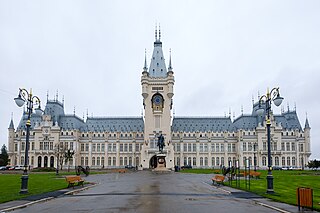
The Palace of Culture is an edifice located in Iași, Romania. The building served as Administrative and Justice Palace until 1955, when its destination was changed, being assigned to the four museums nowadays united under the name of Moldavia National Museum Complex. Also, the building houses the Cultural Heritage Conservation-Restoration Centre, and hosts various exhibitions and other events.
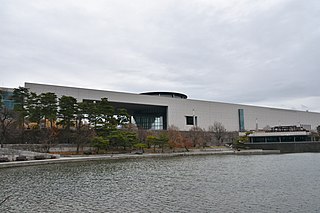
The National Museum of Korea (Korean: 국립중앙박물관) is the flagship museum of Korean history and art in South Korea. Since its establishment in 1945, the museum has been committed to various studies and research activities in the fields of archaeology, history, and art, continuously developing a variety of exhibitions and education programs.

The National Museum in Kraków, popularly abbreviated as MNK, is the largest museum in Poland, and the main branch of Poland's National Museum, which has several independent branches with permanent collections around the country. Established in 1879, the museum consists of 21 departments which are divided by art period: 11 galleries, 2 libraries, and 12 conservation workshops. It holds some 780,000 art objects, spanning from classical archeology to modern art, with special focus on Polish painting.

The National Museum of Indonesia is an archeological, historical, ethnological, and geographical museum located in Jalan Medan Merdeka Barat, Central Jakarta, right on the west side of Merdeka Square. Popularly known as the Elephant Museum after the elephant statue in its forecourt, its broad collections cover all of Indonesia's territory and almost all of its history. The museum has endeavoured to preserve Indonesia's heritage for two centuries.
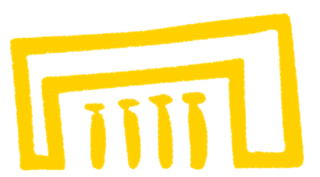
The National Museum of Beirut is the principal museum of archaeology in Lebanon. The collection begun after World War I, and the museum was officially opened in 1942. The museum has collections totaling about 100,000 objects, most of which are antiquities and medieval finds from excavations undertaken by the Directorate General of Antiquities.
The Shan State Cultural Museum, now known as Cultural Museum (Taunggyi), is a museum located at Bogyoke Aung San Road and Eintawshay Road, in Taunggyi, Shan State, Myanmar (Burma). This museum is one of the cultural museums under the Department of Archaeology and National Museum, Ministry of Religious Affairs and Culture, the Republic of the Union of Myanmar. It was established in 1974. It displays divans, swords, fans, chairs used by Sawbwa (Shan Chief of former times), old paintings, coins and traditional costumes of the Shan races.

The Vietnam National Museum of History is in the Hoan Kiem district of Hanoi, Vietnam. The museum building was an archaeological research institution of the French School of the Far East under French colonial rule of 1910, was extensively refurbished in 1920. It was redesigned between 1926 and 1932 by architect Ernest Hébrard. The museum was acquired by the government of North Vietnam in 1958 and then the artifact collections were expanded to cover eastern arts and national history.
The National Administration of Cultural Heritage is an administrative agency affiliated with the Ministry of Culture and Tourism of the People's Republic of China. It is responsible for the development and management of museums as well as the protection of cultural relics of national importance.

The National Handicrafts and Handlooms Museum (NHHM) commonly known as National Crafts Museum in New Delhi is one of the largest crafts museums in India. It is run by the Ministry of Textiles, Government of India. The museum is situated on the corner of the Pragati Maidan, facing the Purana Quila complex. In 2015, the Government of India announced that a Hastkala (handicrafts) Academy would be established in the museum premises, converting some galleries into classrooms. Initial renovations destroyed one of the museum's most well-known artifacts, a room of murals painted by Madhubani artist Ganga Devi, leading to widespread criticism. As of 2019, renovations are still ongoing.
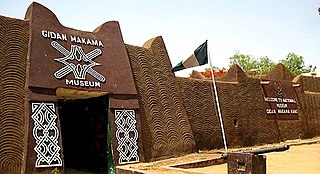
Gidan Makama Museum Kano or Kano Museum is a museum in Kano, Nigeria. This building served as temporary palace of Sarakunan Hausa of Kano before the current palace Gidan Rumfa was constructed in the 15th century The museum has a significant collections of arts, crafts and items of historic interest related to the Kano area. Located in a 15th-century historical building, which is recognised as a National Monument by the Government of Nigeria. The museum is divided into 11 galleries, each with their own centre of focus. Galleries include the Zaure or the main entrance hall with displays of traditional materials, city walls and maps of Kano, the history of statehood, Kano in the 19th century, the Civil War, economy, industry and music.

The Ministry of Culture of Azerbaijan Republic is a governmental agency within the Cabinet of Azerbaijan in charge of regulation of the activities and promotion of Azerbaijani culture. The ministry is headed by Anar Karimov.

The Chinese Museum or Museum of Chinese Australian History is an Australian history museum located in Melbourne's Chinatown, which is dedicated to documenting, preserving and displaying the history, heritage and culture of Australia's Chinese community. The museum was established in 1985 with a charter to present the history of Australians of Chinese ancestry. An extensive refurbishment funded by the Victorian Government was completed in 2010. Since then, the museum has also acted as a Chinatown Visitor Centre.

Odesa Museum of Western and Eastern Art is a museum of Fine Arts on Pushkin street in Odesa, Ukraine.
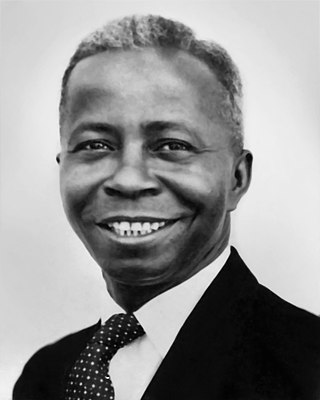
Edison Reginald Townsend was a Liberian journalist and statesman known for the establishment of Liberia's Information Services. He served as Secretary of Information and Cultural Affairs under President William Tubman, and as Minister of State for Presidential Affairs under President William Tolbert. In 1979 he was elected National Chairman of the True Whig Party. Following the 1980 Liberian coup d'état of President Tolbert on April 12, 1980, he and several other members of the Tolbert administration were put on trial and without due process executed by firing squad on April 22, 1980.

Ganja State History-Ethnography Museum named after Nizami Ganjavi is the largest museum in Ganja,

The Center for National Documents and Records serves as the national archives of Liberia. It was headquartered on Tubman Boulevard in the Sinkor section of the city of Monrovia until 1992, when it moved to Ashmun Street. Directors have included Philomena Bloh Sayeh.
Heritage management in the Philippines is guided by laws and agencies that create regulations for potentially destructive behaviors such as excavations and demolition. Legislation pertaining to heritage management consists of Republic Acts and Presidential Decrees. Organizations such as UNESCO, the National Commission for Culture and the Arts, and the Heritage Conservation Society are also referred to in laws.




















